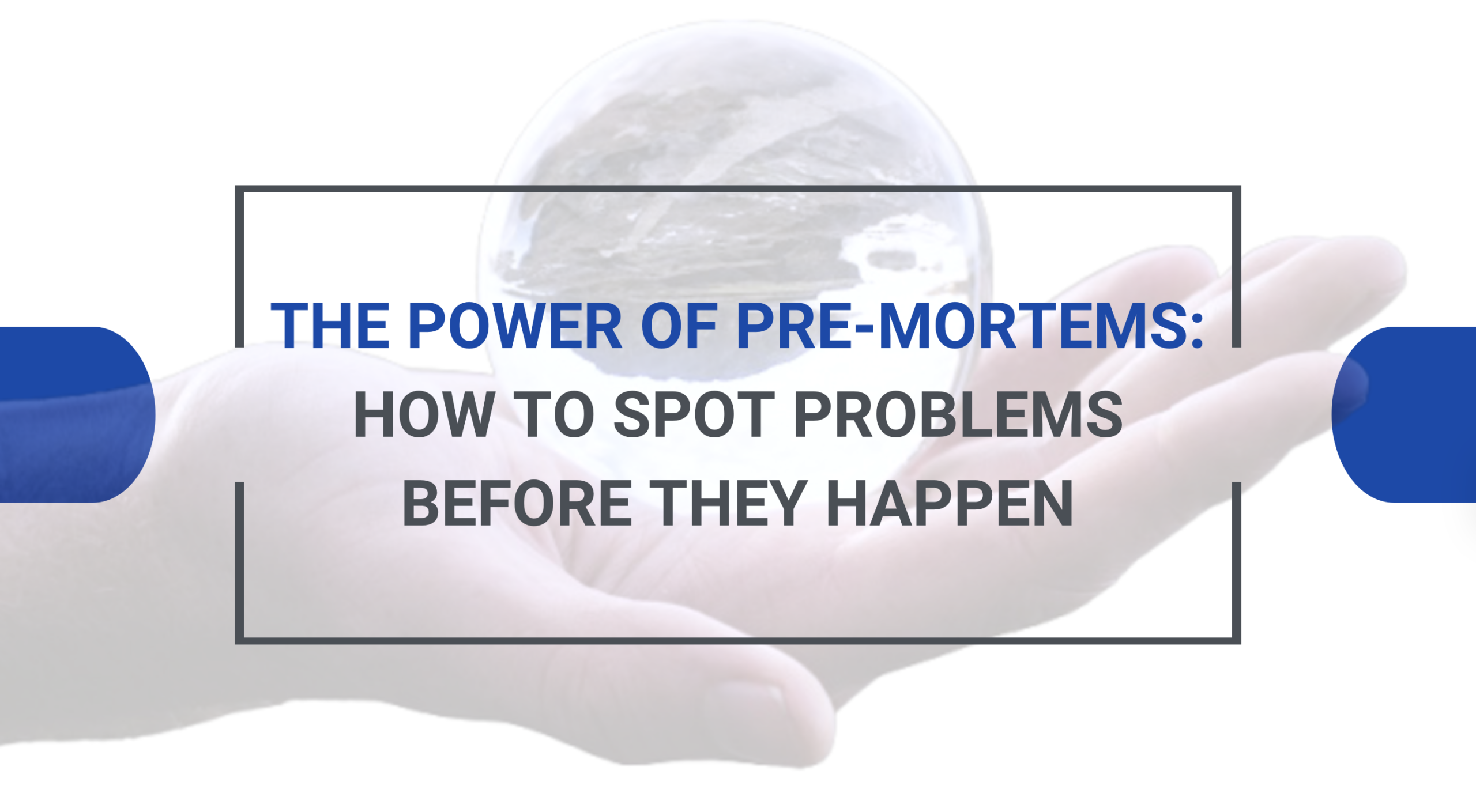Pre-mortem
Spot Project Problems with a Pre-mortem

Harness the power of foresight
Are you tired of projects failing despite careful planning? Imagine having a tool to identify potential pitfalls before they derail your efforts. Gary Klein’s Pre-mortem technique offers just that—it helps you anticipate and mitigate risks before they become insurmountable problems.
The Harvard Business Review published an article, Performing a Project Premortem (2007), and Nobel Prize laureates Daniel Kahneman and Richard Thaler have endorsed the technique.
What is a Pre-mortem?
Unlike traditional post-mortems, which look at failures after they happen, a Pre-mortem shifts the timeline. It empowers teams to imagine a future where the project has already failed and then work backward to identify and share ideas about what went wrong. This proactive approach brings potential issues to light sooner, fostering a culture of preparedness and openness.
Learn more about the Pre-mortem in our new course The Power of Pre-mortems: How to Spot Problems Before They Happen.
Why use Pre-mortems?
Proven Success
Developed by renowned psychologist Gary Klein, the Pre-mortem has been successfully implemented in various industries, from healthcare to finance, ensuring stronger and more resilient projects.
Improved Team Collaboration
By involving the entire team in identifying potential risks, the Pre-mortem welcomes diverse perspectives, leading to more comprehensive solutions and establishing an environment of candidness.
Cost Effective
Preventing issues before they arise saves both time and money, reducing the need for costly interventions during the project lifecycle.
Increased Confidence
Knowing you’ve anticipated and planned for possible challenges before the project starts gives your team the confidence to execute projects with greater assurance.
How does it work?
Assemble Your Team
At your project kickoff meeting, gather key stakeholders and team members for a dedicated Pre-mortem session.
Visualize Failure
Encourage team members to imagine that the project has already failed spectacularly. What caused this failure?
Identify Risks
Collect insights from each member and identify common themes. What potential issues could arise?
Develop Strategies
Create actionable plans to address the identified risks, ensuring your project is prepared for any challenge. How can the potential problems be prevented or mitigated?